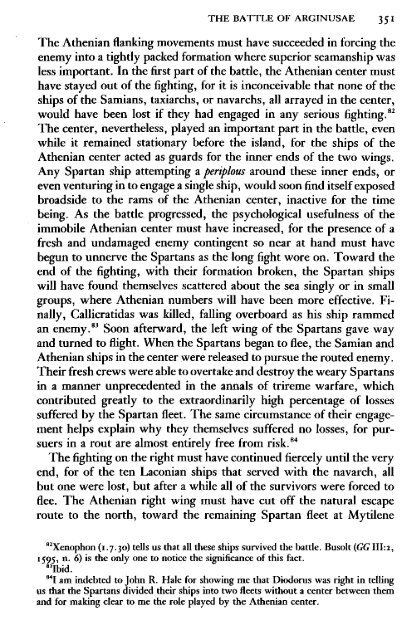The Fall of the Athenian Empire-(A New History of the Peloponnesian War) Donald Kagan - (1987)
MACEDONIA is GREECE and will always be GREECE- (if they are desperate to steal a name, Monkeydonkeys suits them just fine) ΚΑΤΩ Η ΣΥΓΚΥΒΕΡΝΗΣΗ ΤΩΝ ΠΡΟΔΟΤΩΝ!!! Strabo – “Geography” “There remain of Europe, first, Macedonia and the parts of Thrace that are contiguous to it and extend as far as Byzantium; secondly, Greece; and thirdly, the islands that are close by. Macedonia, of course, is a part of Greece, yet now, since I am following the nature and shape of the places geographically, I have decided to classify it apart from the rest of Greece and to join it with that part of Thrace which borders on it and extends as far as the mouth of the Euxine and the Propontis. Then, a little further on, Strabo mentions Cypsela and the Hebrus River, and also describes a sort of parallelogram in which the whole of Macedonia lies.” (Strab. 7.fragments.9) ΚΚΕ, ΚΝΕ, ΟΝΝΕΔ, ΑΓΟΡΑ,ΕΚΚΛΗΣΙΑ,ΝΕΑ,ΦΩΝΗ,ΦΕΚ,ΝΟΜΟΣ,LIFO,MACEDONIA, ALEXANDER, GREECE,IKEA
MACEDONIA is GREECE and will always be GREECE- (if they are desperate to steal a name, Monkeydonkeys suits them just fine)
ΚΑΤΩ Η ΣΥΓΚΥΒΕΡΝΗΣΗ ΤΩΝ ΠΡΟΔΟΤΩΝ!!!
Strabo – “Geography”
“There remain of Europe, first, Macedonia and the parts of Thrace that are contiguous to it and extend as far as Byzantium; secondly, Greece; and thirdly, the islands that are close by. Macedonia, of course, is a part of Greece, yet now, since I am following the nature and shape of the places geographically, I have decided to classify it apart from the rest of Greece and to join it with that part of Thrace which borders on it and extends as far as the mouth of the Euxine and the Propontis. Then, a little further on, Strabo mentions Cypsela and the Hebrus River, and also describes a sort of parallelogram in which the whole of Macedonia lies.”
(Strab. 7.fragments.9)
ΚΚΕ, ΚΝΕ, ΟΝΝΕΔ, ΑΓΟΡΑ,ΕΚΚΛΗΣΙΑ,ΝΕΑ,ΦΩΝΗ,ΦΕΚ,ΝΟΜΟΣ,LIFO,MACEDONIA, ALEXANDER, GREECE,IKEA
Create successful ePaper yourself
Turn your PDF publications into a flip-book with our unique Google optimized e-Paper software.
THE TRIAL OF THE GENERALS 35 5<br />
<strong>The</strong> last phase <strong>of</strong> <strong>the</strong> battle found <strong>the</strong> A<strong>the</strong>nian fleet stretched over<br />
a large area <strong>of</strong> <strong>the</strong> sea. <strong>The</strong> original line <strong>of</strong> battle had been long, and<br />
<strong>the</strong> opening maneuvers in which <strong>the</strong> ships on <strong>the</strong> wings had made<br />
flanking movements had stretched it fur<strong>the</strong>r. Later, <strong>the</strong> right wing<br />
must have advanced <strong>the</strong> two miles to <strong>the</strong> west to Cape Mal ea on Lesbos<br />
to close <strong>of</strong>f escape to <strong>the</strong> north. Afterward, some <strong>of</strong> <strong>the</strong> A<strong>the</strong>nian ships<br />
will have gone south in pursuit <strong>of</strong> <strong>the</strong> routed enemy. <strong>The</strong> ships on <strong>the</strong><br />
A<strong>the</strong>nian left also will have pursued <strong>the</strong> defeated enemy ships to <strong>the</strong><br />
south when <strong>the</strong>y turned to flee. On both wings <strong>the</strong> pursuit was fierce<br />
and extended, for it was important to destroy as much <strong>of</strong> <strong>the</strong> enemy<br />
fleet as possible. 2 Thirteen <strong>of</strong> <strong>the</strong> twenty-five lost A<strong>the</strong>nian ships had<br />
disappeared beneath <strong>the</strong> waves, but <strong>the</strong> wrecks <strong>of</strong> twelve ships,' with<br />
well over a thousand men clinging to <strong>the</strong>m, and <strong>the</strong> bodies <strong>of</strong> many<br />
dead A<strong>the</strong>nian sailors bobbed on <strong>the</strong> choppy sea over a space <strong>of</strong> at<br />
least four square miles. 4 Breaking <strong>of</strong>f <strong>the</strong>ir pursuit, <strong>the</strong> scattered A<strong>the</strong>nian<br />
ships made no effort to rescue <strong>the</strong> survivors or pick up <strong>the</strong> bodies<br />
but hurried back to <strong>the</strong> Arginusae Islands to regroup and confer about<br />
<strong>the</strong>ir next step. 5<br />
In his passionate defense <strong>of</strong> <strong>the</strong> A<strong>the</strong>nian people for <strong>the</strong>ir ultimate<br />
condemnation <strong>of</strong> <strong>the</strong> generals, Grote denounced <strong>the</strong> latter for <strong>the</strong>ir<br />
with an open mind, using each when it seems appropriate. Influenced by <strong>the</strong> discovery<br />
<strong>of</strong> <strong>the</strong> Hellenica Oxyrhynchia and <strong>the</strong> unmistakable evidence that Diodorus <strong>of</strong>ten used<br />
it, A. Andrewes (Phoenix XXVIII [1974], 112-122) has argued that he used it, in part,<br />
for his account <strong>of</strong> <strong>the</strong> trial as well. He says, "we need not hesitate to prefer <strong>the</strong> Diodoran<br />
version, at least down to that point towards <strong>the</strong> end <strong>of</strong> 101 where he begins to abbreviate<br />
so heavily that we lose any flavour <strong>of</strong> his ultimate original" (120). His argument is<br />
persuasive, and I think we should be ready to believe Diodorus when <strong>the</strong>re seems good<br />
reason to do so. At <strong>the</strong> same time, we need to be willing to accept Xenophon when<br />
his version is better. My own practice resembles Cloche's, although my conclusions<br />
are different.<br />
2 Diodorus (I]. lOO. I) tells us that <strong>the</strong> A<strong>the</strong>nians pursued for a considerable distance:<br />
Eel>' i.Ka:vOv.<br />
1<br />
Xen. 1.6.]5; 7.30; Busolt, GG lll::z, 1596, n. I.<br />
4<br />
Diod. 13.100.1. I calculate <strong>the</strong> area by assuming that pursuit to <strong>the</strong> south went as<br />
far as <strong>the</strong> distance between <strong>the</strong> islands and Lesbos, two miles. It seems likely that this<br />
is a low estimate. <strong>The</strong> number <strong>of</strong> survivors is likewise conservative. L. Herbst (Die<br />
Schlacht beiden Arginusen [Hamburg, t855], 37, n. 51)places <strong>the</strong> number at I ,:zoo, Busolt<br />
(GG Ill:2, 1596) at :z,opo. It is noteworthy that Diodorus consistently refers to corpses<br />
only throughout <strong>the</strong> affair, whereas Xenophon speaks <strong>of</strong> <strong>the</strong> survivors.<br />
5 Xenophon (1.6.33; 7.29) makes it dear that <strong>the</strong> A<strong>the</strong>nians returned to <strong>the</strong> islands<br />
and held a conference <strong>the</strong>re before making any attempt at rescue. Diodorus (1 3· 100. I-<br />
3) tells <strong>of</strong> <strong>the</strong> conference before <strong>the</strong> return to Arginusae, but Xenophon is surely correct.<br />
As Cloche points out (RH CXXX [1919]), it is entirely unclear how <strong>the</strong> scattered<br />
A<strong>the</strong>nian ships could have met for a discussion anywhere but Arginusac.

















